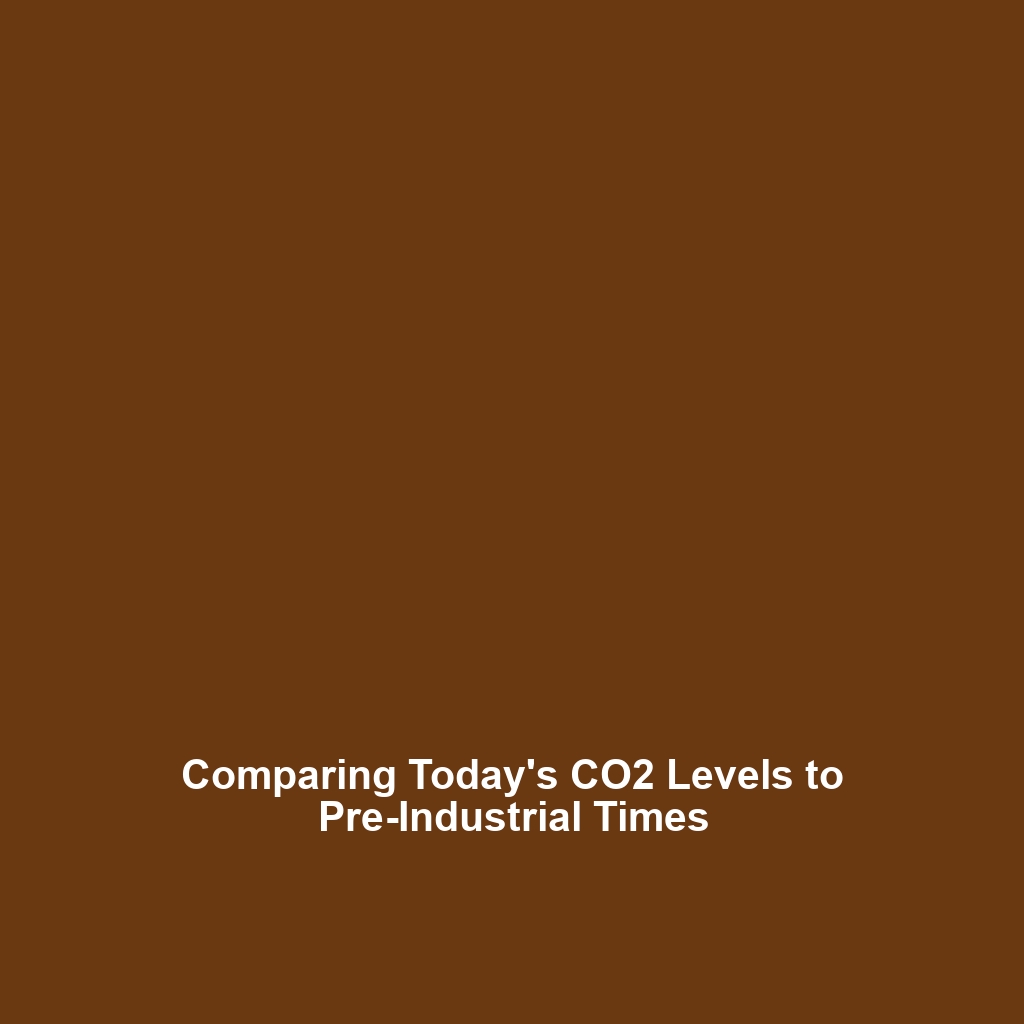Comparison of Modern CO2 Levels with Pre-Industrial Levels
Introduction: The comparison of modern CO2 levels with pre-industrial levels is crucial for understanding the trajectory of climate change and its historical context. Over the past century, human activities have contributed to a significant rise in atmospheric carbon dioxide (CO2), reaching levels unprecedented in at least 800,000 years. This article examines the historical shifts in CO2 concentrations, providing essential insight into the enduring impact of rising CO2 on climate history and future climate scenarios.
Key Concepts
Understanding the differences between modern and pre-industrial CO2 levels entails several key concepts:
- Carbon Cycle: The natural process by which CO2 is exchanged among the atmosphere, oceans, soil, and living organisms.
- Fossil Fuels: Combustion of coal, oil, and natural gas has drastically increased CO2 emissions since the Industrial Revolution.
- Climate Feedback Loops: Mechanisms that can amplify or dampen the effects of climate change, influenced by CO2 levels.
This comparison of modern CO2 levels with pre-industrial values provides essential data points for understanding the evolution of Earth’s climate system.
Applications and Real-World Uses
Analyzing modern CO2 levels versus pre-industrial levels can be applied in various ways:
- Climate Modeling: Historical CO2 data informs climate models that predict future conditions.
- Policy Making: Governments use such comparisons to formulate carbon reduction policies and environmental regulations.
- Public Awareness: Educating communities on CO2 emissions and their impacts fosters global awareness about climate change.
These applications illustrate how understanding CO2 levels is critical in the realm of climate history.
Current Challenges
Studying the differences between modern and pre-industrial CO2 levels presents several challenges:
- Data Reliability: Historical data is often indirect and relies on proxies like ice cores.
- Attribution: Determining the specific sources of CO2 emissions can be complex due to overlapping factors.
- Public Policy Disconnect: Bridging the gap between scientific understanding and effective policy implementation remains an ongoing issue.
Future Research and Innovations
Upcoming innovations in this field include:
- Advanced Climate Models: Integrating machine learning to enhance predictive capabilities.
- Carbon Capture Technology: Innovations aimed at reducing atmospheric CO2 through technological interventions.
- Improved Monitoring Systems: Deploying satellite technology for real-time tracking of global CO2 emissions.
These advancements hold promise for improving our understanding of CO2 dynamics and their implications for climate history.
Conclusion
In summary, the comparison of modern CO2 levels with pre-industrial levels is significant for uncovering patterns in climate history and addressing the challenges posed by climate change. Understanding this relationship informs both public policy and individual actions aimed at mitigating climate impacts. For further reading, explore our articles on climate impacts and reducing carbon footprints.
